ゲームメカニクスのアップデート(10/13 Update)

ゲーム内のややこしい動作システムが変更されるようです。
例えば、ヴァイオレット・アイの講師を盤面に出している状況でマインドゲームスを使って熱狂する火霊術師が出た場合、元々盤面に居なかったはずの熱狂する火霊術師が発動してしまう、という動作がありました。
何故呪文を使用した際に盤面にいなかった熱狂する火霊術師の効果が発動するのかは直感的に理解しづらいものでした。今後はこの動作を修正し、「盤面に居なかった熱狂する火霊術師」の効果は発動しなくなります。
このような、一見して分かりづらい動作はゲーム内に多く存在していますが、少しずつ時間をかけて減らしていくというのが今回の発表の趣旨となります。公式では意見を募集しているようですので、これは?と思った動作があれば、フォーラムや問い合わせフォームで意見を伝えてみるといいと思います。
公式が動画で分かりやすく説明しています。
なお、Redditで動画で解説していた開発者のジョシュ・ドリーカがユーザーの質問に答えていたので、いくつか翻訳して掲載します。
Q1. 枷を打ち砕きし者クラルと屍山血河のグルダンで召喚されるモグリの薬屋はどうなりますか?
A1. どちらも順番に処理されます。枷を打ち砕きし者クラルは手札の左から順に召喚され、屍山血河のグルダンはランダムで悪魔を召喚します。どちらもモグリの薬屋が召喚された後に召喚されたミニオンがモグリの薬屋の効果を発動させるようになります。

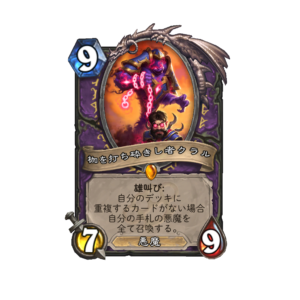
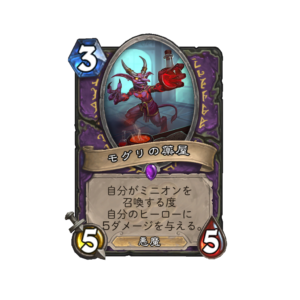
Q2. 影の狂気を使用して相手の熱狂する火霊術師を奪った場合はどうなるのでしょう?自分の盤面には熱狂する火霊術師はいなかったはずですが発動するのでしょうか。
A2. 発動しません。影の狂気を使用した時点では熱狂する火霊術師が仲間のミニオンではないからです。


Q3. 告死隠者スロールの雄叫びでモグリの薬屋が出現した際、モグリの薬屋の効果が発動するのは修正されますか?
A3. 告死隠者スロールがモグリの薬屋の効果を発動させるバグは次のパッチで修正されます。(詳しくはこちら)同じパッチでは適用されませんが、今後は進化を使った際に発生する召喚エフェクトも修正する予定です。

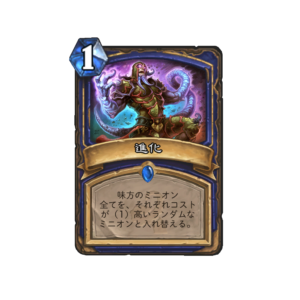
Q4. モグリの薬屋が選択で変身するミニオン(爪のドルイド等)で2度発動するのは修正されますか?
A4. その現象も修正する予定です!

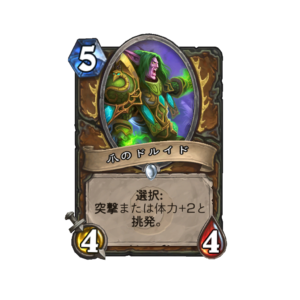
Q5. ダークシャイアの管理官が盤面にいるときにソード・オブ・ジャスティスを装備していると、シルバーハンド新兵に聖なる盾が付かないのはバグでしょうか?
A5. バグです!本来なら、ダークシャイアの管理官がシルバーハンド新兵に聖なる盾を付与した後にソード・オブ・ジャスティスの効果でバフされるべきです。残念ながら現在は、ソード・オブ・ジャスティスが先に発動してしまい聖なる盾が付かなくなってしまっていますが、他の召喚エフェクトと一緒に少しずつ改善していく予定です。
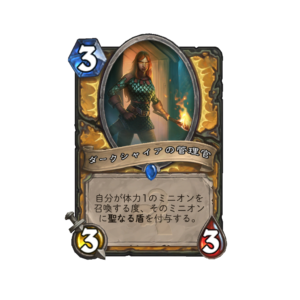
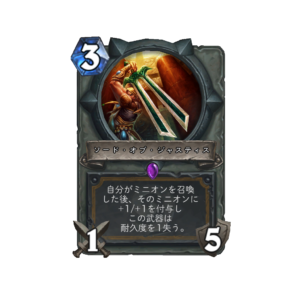
①「~する度」という効果を発動する
②カードの効果を発動
③「その後」の効果を発動A6. その順番は意識しています。フォーラムでも言及してますが、個々のエフェクトは次のように動作します。
①カードが使用される
②「~する度、~したとき」という効果が発動
③カードの効果が発動
④「その後」の効果を発動
「雄叫び」効果は③で発動し、影分身は②で発動します。最初の枷を打ち砕きし者クラルを出した時点で影分身はすでに変換されているため、影分身の枷を打ち砕きし者クラルが召喚されるのです。


まず一つ目。「断末魔」+「秘策」への「雄叫び」効果です。マッドサイエンティストに対してメディヴの従者を使用したとき、マッドサイエンティストの断末魔で鏡の住人が貼られるとメディヴの従者がコピーされます。ただ、仇討は何故か発動しません。
2つ目は、全体除去(AoE)でミニオンが処理されたときに体力が0やマイナスになったミニオンが、仇討で生き残ったことです。
A7. 1つ目のような現象はもう起きません。ただ、2つ目の現象は残ります。理解しがたい現象だとは認識していますが、マーロックの戦隊長の能力を変更した理由の一つがこの現象です。今のところこの現象についての修正予定はありません。
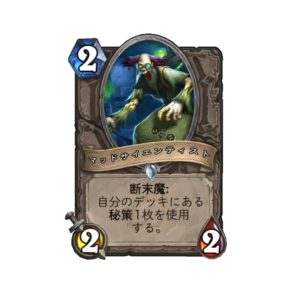
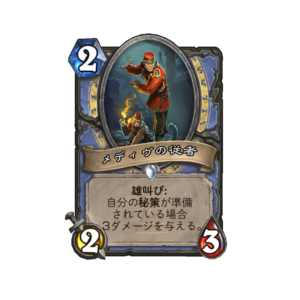
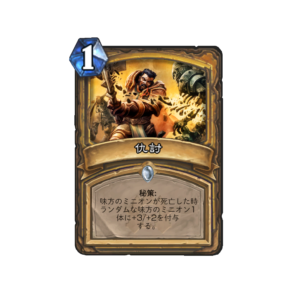

Q8. 盤面にいないミニオンの効果は常に発動しないという意味でしょうか。例えば、10/10のクトゥーンを、ぐったりガブ呑み亭の常連が1体だけいる状態で使用した場合、相手のヒーローに7点のダメージを与えられるということですか?
A8. いいえ、クトゥーンはぐったりガブ呑み亭の常連を量産することになるでしょう。クトゥーンのターゲットは能力が発動する毎に状況判断を行っています。これはフレイムウェイカーや魔力の矢も同様です。
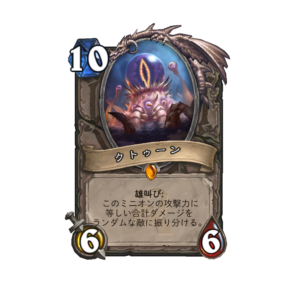
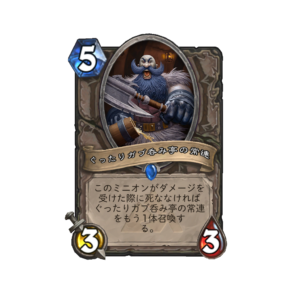
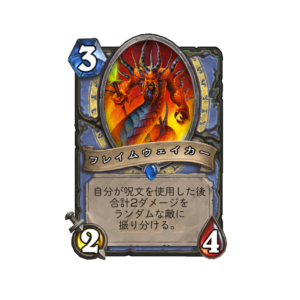

Q9. 虚ろのヴァリーラの影分身はドラゴンシナジーを誘発しますが、これは修正されるのでしょうか。
A9. この効果は発動します。Q6で答えたように、ドラコニット諜報員を使用すると影分身が発動して手札にドラコニット諜報員が加わり、その後「雄叫び」が発動するからです。
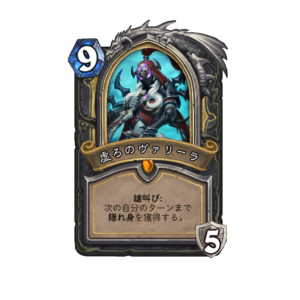
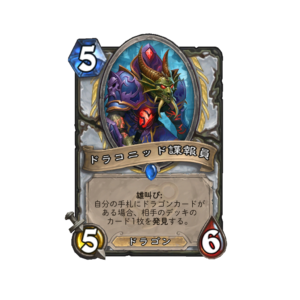
※この動作には一部バグがあるようです。
参考:【動画】ハースストーンの謎を検証 – Hearthstone Mythbusters 42)
改善点の詳細については英語で公開されています。
公式:https://us.battle.net/forums/en/hearthstone/topic/20759378548#1
Hearthstone has a lot going on under the hood. The cause-and-effect relationships when cards are played are relatively straightforward and easy to predict, but because of the way certain events are timed, some very surprising things can happen in rare circumstances. We want cards to work the way that you guess they might—in other words, we want the game to work intuitively.
In the upcoming patch, we’re making some changes in pursuit of that goal. We want Hearthstone to continue to be strategically deep: a game of careful choices, calculated risks, and exciting events. So we want to be extra clear that this update isn’t a change in depth; instead it’s one step in an ongoing effort improve Hearthstone’s mechanics.
Hearthstone’s core gameplay won’t change, but what will change are some rare edge-cases.
Please be aware: what follows is a detailed look at Hearthstone’s mechanics by Hearthstone Gameplay Engineer Josh Durica. If you want to delve into the nitty-gritty details regarding how this change will work, read on.
First, A Glossary
Event
Events are interactions that occur throughout gameplay that can cause triggers to activate when they happen.
Example Events:
- Whenever a Card is Played
- After a Card is Played
- Deathrattle (When this minion dies)
- Whenever a Minion Takes Damage
- At the End of Your Turn
Trigger
A trigger has two parts: an event (usually starts with “Whenever”, “After”, or “At”), and an effect. Sometimes triggers can also have a condition (usually noted with “if” or “while”, but sometimes noted by qualifiers like “your”).
Example triggers:
- Whenever you cast a spell, gain +1 Attack.
- After you cast a spell, deal 1 damage to ALL minions.
- At the end of your turn, give another random friendly minion +1 Health.
- If you control a Secret at the end of your turn, gain +2/+2.
Zone
In Hearthstone, there are three zones where triggers can happen, and they happen in order: First, any triggers in the Battlefield, then those that occur in a player’s Hand, and finally those that belong to cards in a player’s Deck.
Sequence
Whenever an action is taken, Hearthstone executes a sequence of steps to resolve what happens.
Here’s a simplified example sequence:
-
-
- ACTION: A card is played (this begins the sequence)
- EVENT: Whenever A Card is Played
o Whenever A Card is Played
-
triggers
-
- resolve
-
-
- Card ability activates
- EVENT: After a Card is Played event occurs
o After a Card is Played
-
triggers
- resolve
Here’s what that sequence would look like using actual cards, if you had a Questing Adventurer and a Flamewaker on the board, and then played Frostbolt:
-
-
- ACTION: Frostbolt is played (this begins the sequence)
- EVENT: Whenever a Card is Played triggers resolve
o Questing Adventurer gains +1/+1
-
-
- Frostbolt’s text resolves: Deal 3 damage and freeze
- EVENT: After a Card is Played triggers resolve
o Flamewaker shoots two missiles
This is a simple example, but a sequence can incorporate many events and triggers.
Keep in mind that dealing damage, destroying a minion, and other things can interrupt sequences with new sequences, like in this more detailed example:
-
-
- ACTION: Frostbolt is played (this begins the sequence)
- EVENT: Whenever a Card is Played triggers resolve
o Questing Adventurer gains +1/+1
-
-
-
- Frostbolt’s text resolves: Deal 3 damage and freeze
o NEW SEQUENCE: Damage dealt
-
-
- o EVENT:
Whenever a Minion Takes Damage triggers
-
- resolve
-
-
- EVENT: After a Card is Played triggers resolve
o Flamewaker shoots 1 missile
-
-
-
- NEW SEQUENCE: Damage dealt
- EVENT: Whenever a Card Takes Damage triggers resolve
o Flamewaker shoots another missile
-
- NEW SEQUENCE: Damage dealt
- EVENT: Whenever a Card Takes Damage triggers resolve
In Pursuit of the Goal
If you watched the video in our recent blog post, then you saw two different examples of cards triggering in counter-intuitive ways because they weren’t present when the sequence that activated them took place. That sets the stage for the primary goal we wanted to accomplish with these changes:
If you want to trigger off something, you need to be present and valid when that something first happens.
A more technical way to say this is: In order for a trigger to activate from a sequence, it needs to be present and valid at the time the sequence began.
This means any card featuring a trigger that appears in the middle of a sequence can’t activate during that sequence. So, when you play a card (or when a card is destroyed, or an attack occurs, etc.) you only need to consider what is currently on the board instead of guessing what the board state might be in the middle of the sequence. The Mindgames + Wild Pyromancer interaction showcased in the video is an example of an interaction improved by this change.
The valid qualifier is more subtle, but equally important. Before any trigger can activate, it needs to be validated. Each trigger has its own specific validation step, which allows the trigger to filter when it should and shouldn’t activate. For example, the Whenever a Card is Played event occurs when any card of any type (Minion, Spell, Weapon, etc.) is played. However, we want a card like Flamewaker to only trigger when a friendly spell is cast, so the Flamewaker’s validation step checks the card type and controller of the card played. In other words, Flamewaker’s trigger is only valid if the card played was a spell cast by Flamewaker’s controller.
Before our changes, we would validate triggers whenever their related event occurred, even if that was in the middle of the sequence. After the mechanics update, all triggers are validated when the sequence begins, and then they are only allowed to activate if they were valid from the start.
For further insight, let’s look at a bug that will be addressed by the update:
Currently, if you have a Djinni of Zephyrs on the board and cast Entomb on an enemy minion, your Djinni of Zephyrs will trigger, sending itself back to your deck. Not great for you or the Djinni! Djinni of Zephyrs triggers off the After a Card is Played event, and his validation step should only pass if the card played was a spell cast on a different friendly minion. Entomb is a spell, but it was cast on an enemy minion, so why does Djinni trigger?
Remember: the After a Card is Played event occurs after the ability on the played card resolves. In this case, that card is Entomb, and its ability moves the enemy minion into your deck. When the enemy minion enters your deck, it becomes a friendly minion. So, by the time the After a Card is Played event occurs, Djinni’s trigger is valid, because the minion is now friendly.
After the mechanics update, Djinni’s trigger is validated at the beginning of the sequence when the enemy minion is still on the battlefield, and because the trigger isn’t valid at that point (since Entomb counts as being cast on an enemy minion), it’s prevented from triggering when the After a Card is Played event occurs.
There is one final change we should mention, which is a tweak to when we validate triggers across different zones. Currently, the order in which triggers are validated and activated looks like this:
1) Validate Player 1 Battlefield triggers and then activate those that are valid.
2) Validate Player 1 Hand triggers and then activate those that are valid.
3) Validate Player 1 Deck triggers and then activate those that are valid.
4) Validate Player 2 Battlefield triggers and then activate those that are valid.
5) Validate Player 2 Hand triggers and then activate those that are valid.
6) Validate Player 2 Deck triggers and then activate those that are valid.
That approach meant new triggers could appear in the middle of a sequence and still be activated, and a trigger’s validation could even be affected by previous triggers’activations. The Bolvar Fordragon/Spirit Echo interaction detailed in the video was an example of a weird interaction caused by this.
After the update, the order now looks like this:
1) Validate all Battlefield triggers
2) Validate all Hand triggers
3) Validate all Deck triggers
4) Activate Player 1 valid Battlefield triggers
5) Activate Player 1 valid Hand triggers
6) Activate Player 1 valid Deck triggers
7) Activate Player 2 valid Battlefield triggers
8) Activate Player 2 valid Hand triggers
9) Activate Player 2 valid Deck triggers
This means all triggers are validated before any trigger is allowed to activate. Since all triggers are validated using the same game state, then triggers that appear in the middle aren’t allowed to fire. It’s important to note that the order in which triggers are activated is unchanged.
Here are some more examples of sequences and their results before and after the mechanics update:
Card Played
Example Interaction:
Player 1 has a Mad Scientist on the board, and a Mirror Entity in their deck.
Player 2 plays Stampeding Kodo.
Before Update
1) Stampeding Kodo kills Mad Scientist.
2) Mad Scientist pulls Mirror Entity into play.
3) Mirror Entity triggers, copying Stampeding Kodo.
After Update
1) Stampeding Kodo kills Mad Scientist.
2) Mad Scientist pulls Mirror Entity into play.
3) Mirror Entity does NOT trigger, because it did not exist when Stampeding Kodo was played.
Minion Destroyed
Example Interaction:
Player 1 has a Piloted Sky Golem and a Wisp on the board (played in that order).
Player 1 plays Deathwing.
The Piloted Sky Golem spawn a Cult Master from its Deathrattle.
Before Update:
The Cult Master’s power triggers off of the Wisp’s death, and Player 1 draws a card.
After Update:
The Cult Master does not trigger off the Wisp’s death, because it wasn’t present to see the Wisp destroyed.
Summon Minion
Example Interaction:
Player 1 has Starving Buzzard and Rotface on the board.
Player 1 also has a Flame Leviathan on top of their deck.
Player 1 plays Savannah Highmane.
Starving Buzzard triggers off of Savannah Highmane, causing Player 1 to draw Flame Leviathan.
Flame Leviathan triggers, dealing 2 damage to all characters.
Rotface triggers off the damage and summons Spiritsinger Umbra.
Before Update:
Spirit Singer Umbra triggers off the Savannah Highmane and summons two hyenas.
After Update:
Spiritsinger Umbra does not trigger off the Savannah Highmane, because she was not present when Savannah Highmane was played.
Thanks for Reading!
Of course, our work to make Hearthstone better won’t stop here!
Like the majority of odd interactions, each of these situations represents an edge case. While this update will address every situation we illustrated (among many others), there are still bound to be more. Keep in mind these are substantial changes to the core systems that underlie Hearthstone! We need to make them incrementally, and with the utmost care, but you can rest assured that we’ll continue to make improvements over time.。
